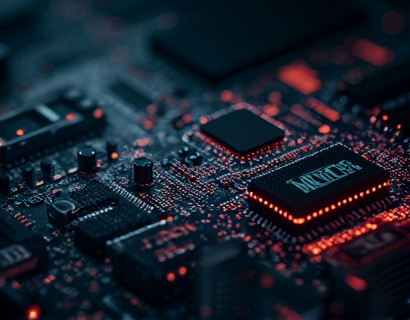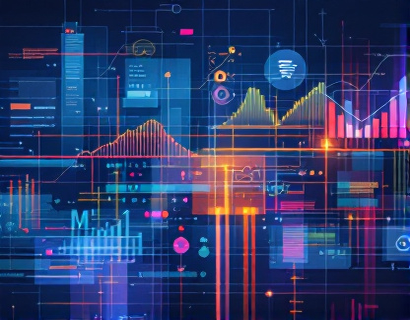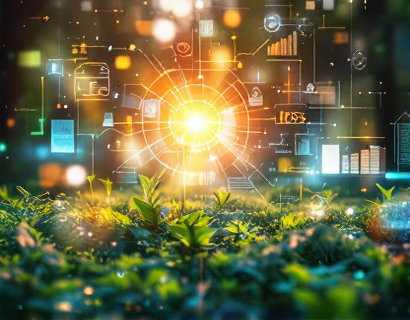Empowering Precision Agriculture: Harnessing Advanced Analytics for Sustainable Horticulture and Farming
In the quest for sustainable agriculture, precision farming emerges as a pivotal strategy, leveraging advanced analytics to optimize resource management and enhance crop yields. This approach involves the use of sophisticated technologies and data-driven insights to make informed decisions, ultimately leading to more efficient and environmentally friendly practices. By embracing precision agriculture, farmers and horticulturists can transform their operations, ensuring productivity without compromising the health of the planet.
The foundation of precision agriculture lies in the collection and analysis of vast amounts of data. Modern farming equipment, such as GPS-enabled tractors and drones, along with soil sensors and weather stations, generate a wealth of information. This data, when processed and analyzed, provides insights into soil conditions, moisture levels, nutrient content, and crop health. Advanced analytics tools can process this data in real-time, offering actionable recommendations to farmers and horticulturists.
Optimizing Resource Management
One of the primary benefits of precision agriculture is the optimization of resource use. Traditional farming methods often lead to overuse or underuse of resources such as water, fertilizers, and pesticides. By utilizing advanced analytics, farmers can apply these resources more precisely, reducing waste and minimizing environmental impact. For instance, soil moisture sensors can detect the exact water needs of crops, allowing for targeted irrigation. This not only conserves water but also prevents overwatering, which can lead to soil erosion and nutrient leaching.
Fertilizer management is another critical area where precision agriculture shines. Through soil testing and plant analysis, farmers can determine the precise nutrient requirements of their crops. This data-driven approach ensures that fertilizers are applied only where and when needed, reducing the risk of nutrient runoff into waterways. Precision application techniques, such as variable rate technology, enable farmers to adjust the amount of fertilizer based on real-time data, further enhancing efficiency and sustainability.
Enhancing Crop Yields
Advanced analytics not only optimize resource use but also contribute to higher crop yields. By monitoring crop health and growth patterns, farmers can identify issues early and take corrective actions. For example, drone-based imagery can detect signs of stress or disease in plants, allowing for timely interventions. This proactive approach helps prevent yield losses and ensures that crops reach their full potential.
Weather forecasting plays a crucial role in precision agriculture as well. Accurate weather predictions enable farmers to plan planting, harvesting, and other critical activities with greater precision. By knowing the exact timing of weather events, farmers can make informed decisions that minimize risks and maximize productivity. For instance, planting seeds during optimal weather conditions can lead to better germination rates and stronger seedlings.
Promoting Sustainable Practices
The integration of advanced analytics in agriculture promotes sustainable practices by reducing the environmental footprint of farming operations. Sustainable agriculture aims to meet the needs of the present without compromising the ability of future generations to meet their own needs. Precision agriculture aligns perfectly with this goal by ensuring that resources are used efficiently and that environmental impacts are minimized.
One key aspect of sustainable agriculture is soil health. Advanced analytics can monitor soil conditions over time, providing insights into soil degradation and suggesting practices to improve soil quality. For example, data on organic matter content, pH levels, and microbial activity can guide farmers in implementing cover cropping, reduced tillage, and other soil conservation techniques. Healthy soil not only supports robust crop growth but also sequesters carbon, contributing to climate change mitigation.
Water conservation is another critical component of sustainable agriculture. Precision irrigation systems, guided by real-time data, ensure that water is used efficiently. This is particularly important in regions facing water scarcity. By optimizing irrigation schedules and amounts, farmers can significantly reduce water usage without compromising crop yields. This not only conserves a vital resource but also reduces the energy required for water pumping and distribution.
Data-Driven Decision Making
The true power of precision agriculture lies in its ability to transform data into actionable insights. Farmers and horticulturists can leverage advanced analytics to make informed decisions at every stage of the farming process. From planning and planting to monitoring and harvesting, data-driven insights provide a comprehensive view of the agricultural operation.
Decision support systems (DSS) are a key tool in this process. These systems integrate various data sources, including satellite imagery, soil sensors, and weather data, to provide farmers with comprehensive recommendations. For example, a DSS might suggest the optimal timing for planting based on soil moisture levels, temperature trends, and historical yield data. Such insights help farmers maximize their returns while minimizing resource use and environmental impact.
Case Studies and Real-World Applications
Several case studies demonstrate the tangible benefits of precision agriculture. In one example, a large-scale farm in the Midwest implemented a precision irrigation system that used soil moisture sensors and weather data to optimize watering schedules. The result was a 30% reduction in water usage and a 15% increase in crop yields. Another instance involves a horticulture operation that used drone-based imagery to monitor plant health. By identifying and treating diseased plants early, the farm reduced pesticide use by 20% and improved overall crop quality.
These success stories highlight the potential of precision agriculture to transform traditional farming practices. By adopting advanced analytics, farmers and horticulturists can achieve higher productivity, lower costs, and greater environmental sustainability.
Challenges and Considerations
While the benefits of precision agriculture are clear, there are challenges and considerations that must be addressed. One significant hurdle is the initial cost of implementing advanced technologies. High-quality sensors, drones, and data analytics software can be expensive, particularly for small-scale farmers. However, the long-term savings and increased efficiency often justify the investment.
Another challenge is the need for technical expertise. Farmers and horticulturists must be trained to collect, interpret, and act on the data provided by analytics tools. This requires a shift in mindset and skill set, but many agricultural extension services and educational programs are stepping in to provide the necessary training.
Data privacy and security are also important considerations. As more data is collected and stored, ensuring the protection of sensitive information becomes crucial. Farmers must work with reliable technology providers that prioritize data security and comply with relevant regulations.
Future Trends and Innovations
The field of precision agriculture is rapidly evolving, with new technologies and innovations on the horizon. Artificial intelligence (AI) and machine learning are set to play a more significant role in data analysis, enabling even more precise and predictive farming practices. AI can analyze complex patterns in data to provide deeper insights and recommendations, further enhancing decision-making processes.
Internet of Things (IoT) devices are becoming increasingly prevalent in agriculture, connecting a wide range of sensors and devices to create a smart farming ecosystem. These devices can communicate with each other and central systems, providing real-time data and automating many farming tasks. For example, smart irrigation controllers can adjust watering schedules based on soil moisture levels and weather forecasts, all without human intervention.
Blockchain technology is another emerging area with potential applications in precision agriculture. By using blockchain, farmers can create transparent and tamper-proof records of their practices, from seed sourcing to harvest. This not only builds trust with consumers but also helps in tracking the sustainability and authenticity of agricultural products.
Conclusion
Precision agriculture, powered by advanced analytics, offers a transformative approach to sustainable horticulture and farming. By optimizing resource management, enhancing crop yields, and promoting sustainable practices, this technology helps farmers and horticulturists achieve their goals while protecting the environment. As the agricultural industry continues to face challenges such as climate change, resource scarcity, and population growth, the adoption of precision agriculture becomes increasingly vital. Embracing these innovations not only ensures productivity and profitability but also contributes to a healthier planet for future generations.










































